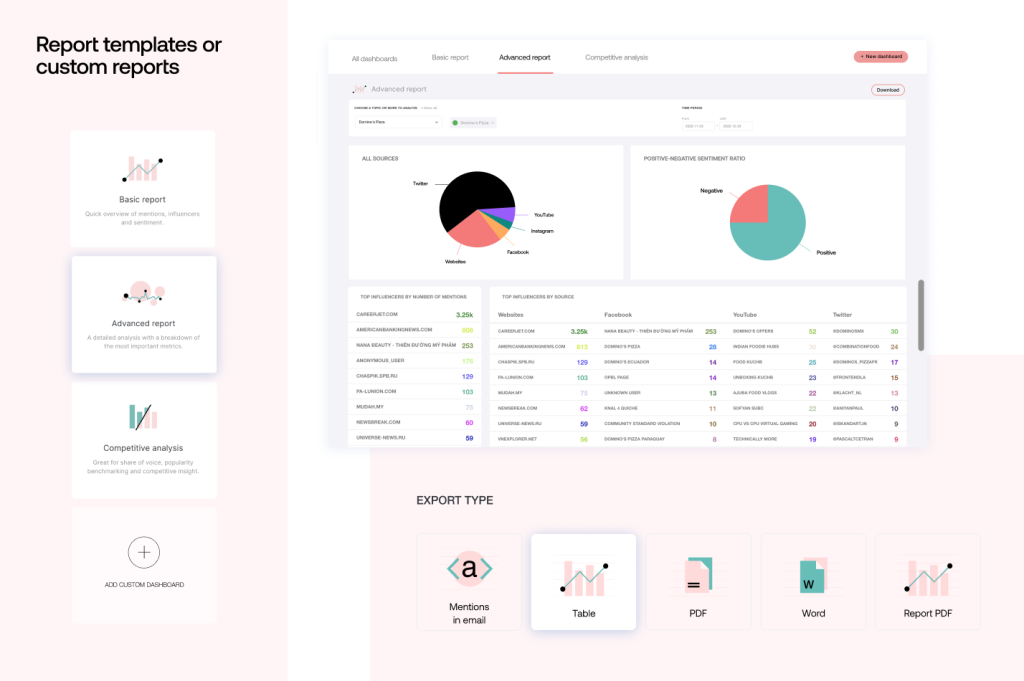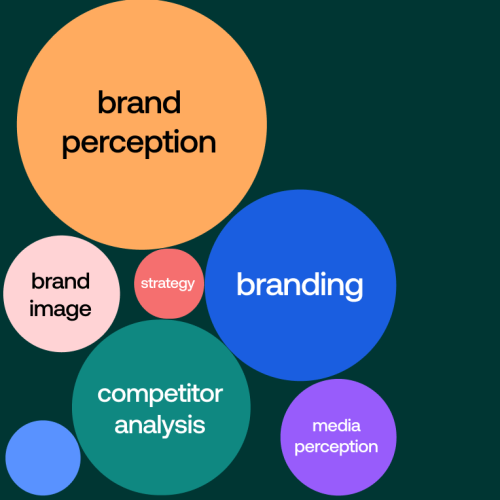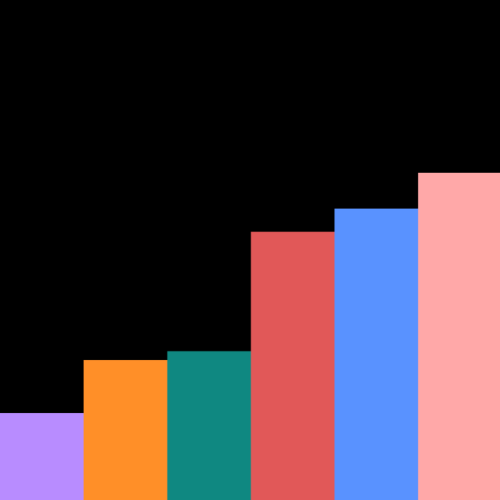Daily monitoring is vital always to know what’s being said online. It gives you data that serves you with important information, enabling you to make better business decisions.
And in marketing and PR, daily monitoring of the news, trends, your brand, campaigns, and competitors is inevitable. If you stay idle for a few days, you’re already losing.
Luckily, that’s where media monitoring tools come in.
? Read Media Monitoring: The Ultimate Guide
At Determ, we offer a powerful media monitoring tool that helps businesses and individuals track news and social media in real time.
Let’s dive into daily monitoring, the benefits, and a checklist based on your use case.

What is daily monitoring, and what are its benefits?
Daily monitoring is an essential part of any brand’s marketing strategy. It usually means tracking the mentions of your brand, products, and services online. But what are the benefits of daily monitoring?
These are:
Early detection of issues
Daily monitoring helps brands identify potential issues, such as negative feedback or a sudden drop in website traffic, before they become significant problems. This allows brands to address issues quickly and prevent them from escalating.
Improved customer satisfaction
By monitoring social media and other channels, brands can quickly respond to customer inquiries and feedback. This helps improve customer satisfaction and builds trust with the brand.
Greater brand awareness
Daily monitoring helps brands stay on top of industry trends and identify potential growth opportunities. This allows brands to proactively develop new marketing strategies and expand their reach.
Read 9 Crucial Brand Awareness Metrics to Track
More effective marketing campaigns
By tracking the performance of marketing campaigns daily, brands can identify what is and isn’t working and make adjustments as needed. This helps improve the effectiveness of marketing campaigns and ultimately leads to greater ROI.
Enhanced brand reputation
Daily monitoring allows brands to respond quickly to negative feedback or comments, which helps protect and enhance the brand’s reputation. It also allows brands to proactively manage their reputation through positive PR and marketing efforts.
This does sound incredibly beneficial – but it’s usually easier said than done, especially because PR and marketing professionals get so busy with tasks and manual work.
And this data needs to be checked regularly to ensure its effectiveness.
Checklist for daily monitoring
The most important thing to clarify is to define what matters to your brand the most current and frame your strategy accordingly. If you’re currently working on improving your brand’s reputation after a crisis, it wouldn’t mean much to track your competitors consistently. Instead, you’d focus on things like the change of sentiment ratio related to your brand and products.
Let’s go through the areas that need daily monitoring and give examples for each of them on what’s supposed to be tracked daily.
Brand monitoring
- Keep an eye out for news and media outlets for any coverage related to your brand or industry.
- Check mentions across social media platforms for any mentions of your brand or related keywords. Monitor mentions across owned and earned platforms using these tools. This means comparing where your brand has a presence (owned media) to where your customers are talking about you (earned media). By doing so, businesses can identify discrepancies and determine if they are utilizing their platforms most effectively.
- Monitor online review sites for your brand. You can specify which websites you want to track and have special feeds that collect comments and articles from those websites.
- Always check for positive and negative comments about your brand and reply to them. Negative comments might stir even more negative comments, just like positive ones do the opposite. That’s what happened with Loganair a couple of years ago. Long story short – one of their flight attendants saw a desperate plea from a mother looking for her son’s lost teddy bear on social media, called the lost-and-found of the airport they visited, found the teddy bear, and sent it to them. Loganair made a fantastic social media story around it, boosting its brand reputation.
Campaign tracking
- Track the performance of ongoing campaigns across various channels, such as social media. See where it’s performing best, and maximize the use of resources. Check if your campaign’s hashtags are being mentioned and if they need adapting. Sometimes, customers take onto a hashtag and change it, so make sure your audience will use the campaign’s hashtag. It would be best if the hashtags get chosen before the launch based on customers’ usage of words when mentioning your brand.
- Analyze the data to identify trends or areas for improvement, check if you’re achieving goals set before the campaign, and if the reach is growing accordingly.
- Analyze the campaign’s sentiment; if it’s majorly negative, figure out why and how you can address the issue that arose.

Crisis management
- Set up alerts for mentions of bad words alongside your brand. For example, if you’re in the food retail industry, ensure you have alerts for potential salmonella or rotten food incidents. You can be notified daily via email, Slack, or the Determ mobile app.

- Ensure you have set automated actions in your media monitoring tool that immediately recognize any potentially harmful mentions – and check these mentions daily. This could grow into crisis if not dealt with.
Read Crisis Management 101: How to Save Your Business When a Crisis Strikes
Competitor analysis
- Analyze your competitor’s online presence and social media activity to identify opportunities and threats. You can get an overview of their mentions across a specific time, and then when you notice spikes, act accordingly. This can mean so much for you, especially if one of your competitors is dealing with a crisis and you’re the first to react.

- Keep track of your competitor’s messaging. By getting an overview of the words they use most (by digging deep into their mentions or taking a glance at the word cloud for their brand name), you can either choose a different battle and choose a different strategy or try to fight for the audience’s attention using the same but improved messaging.

How to never miss out on anything for your brand and your clients’
Alerts
Alerts are real-time notifications that let you know every time a new mention appears.
If you want to get notified every time a new mention appears in your feed for your queries, you can set up alerts to receive notifications on your email, app or Slack.

Digests
Digests are a great way to get an overall picture of what’s happening online for your brand, campaigns, competitors etc. They serve as an overview of these mentions every day, week or whatever suits you.

You can order the mentions received in your digests by highest reach, virality and latest mentions in your feed.
The difference between digest and alerts is that alerts notify you of every new mention, and digest provides you with an overview.
Slack integration
Integrating your query with a dedicated Slack channel lets you receive notifications every time a new mention is added to your feed.

This feature is a game-changer for media monitoring activities, as it lets you stay updated on recent developments within your query.
Moreover, with immediate alerts for negative mentions, you can take timely action to prevent a potential crisis.
Media monitoring app
Another way to stay on top of your media monitoring project is to use a mobile app.
Determ offers an app both for Android and iOS.

As with the Slack integration, you can receive pop-up notifications based on your project settings. Inside the app, you’ll have access to all your queries.
Remember that the app only gives you access to the mentions collected by the media monitoring tool. If you want to add filters to your project, delete mentions, or take a look at any tab, you need to do in the desktop version.
Read What You Need to Know Before Trying Personal Selling
Dashboard
The new Home page in Determ is a dashboard with live data and key metrics so you can view all the most important information at a glance.
That dashboard lets you access important information quicker and easier than ever before:
- See the latest mentions, sources breakdown, and how popular your topic is online
- View keywords and emojis people use when mentioning your topic
- Hover over the charts to go straight to Feed, Reports, and Alerts
- Connect social accounts directly from the dashboard to get more data and better results

Reports
Determ’s reports are are a graphic representation of data collected from all your mentions. Determ has two types of reports: predefined and custom. These offer a breakdown of the most important metrics from your queries, such as: number of mentions, impressions, word cloud, sources, word cloud etc.
Repots can be scheduled as a digest in Determ’s tool. They’re great for minimizing the number of redundant tasks and automating your reporting. This way, you receive emails with reports while maintaining a desired visual identity and elevating your reports to a higher level.

If you’re a part of a PR or marketing agency, this is key when working with several clients who all expect to stay in the loop with your work.
Conclusion
In conclusion, daily monitoring is essential to any brand’s marketing strategy. The benefits of daily monitoring include early detection of issues, improved customer satisfaction, greater brand awareness, more effective marketing campaigns, and enhanced brand reputation.
Although daily monitoring may seem difficult to maintain, media monitoring tools such as Determ can help businesses and individuals track news and social media in real time. Businesses can make better-informed decisions and adjust their strategies by monitoring these areas.
If you’re looking for a powerful media monitoring tool to help track your brand’s online presence and gain a competitive edge, book a demo with Determ today.






